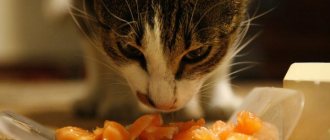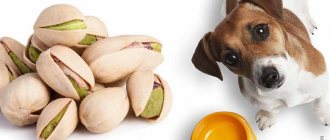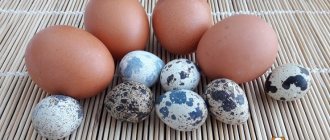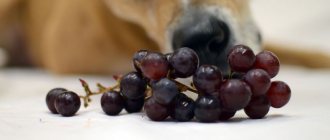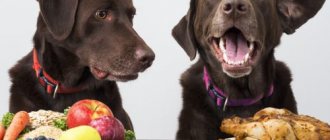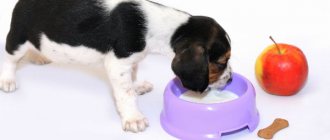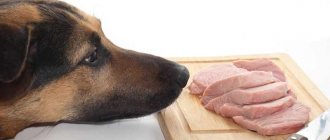Experienced dog breeders and ordinary owners of four-legged barking pets disagree about the inclusion of peas in their dogs’ diet, as well as other legumes.
Most are inclined to completely exclude this product. The reason for this is the poor digestibility of peas by dogs . But there are those who have been feeding their pets legumes for many years without harming the animals’ health. However, peas are a rather controversial product.
Content
There is so much controversy between supporters and opponents of peas as a food component for barking pets. Can dogs eat peas? If permissible, then how much, when and in what form? A number of breeders and professional veterinarians are inclined to think that this product must be unambiguously, completely and categorically excluded from the canine diet. They have one argument, but a very weighty one - the low digestibility of peas, as a result, constipation, bloating and other problems. But there are people who are sure that this type of legume is not only acceptable for dogs, but even necessary. Let's try to carefully consider both points of view, leaving the final choice to the reader.
Dry food for German Shepherd
Avoid packaging with licensed products - as a rule, they are inferior to the branded ones. If the company is located in Germany, and the country of origin is Poland, then the food is produced under license.
When choosing a pack, study its composition:
- Balanced food does not contain soy and beans, but does contain grains.
- The protein content in dry granules is 30–50%.
- Granules (except for those intended for puppies and lactating bitches) cannot be fatty.
- In good food, red and green dyes are invisible.
Buy the product in its original packaging (not by weight) - this is a guarantee that you will not be given an old or damp one.
To prevent tartar, which often appears from dry food, boiled cartilage (once a week).
Do not overfeed your shepherd, remembering that food is higher in calories than natural food. If the body rejects industrial food, review the dog's menu: keep your pet on boiled meat, vegetables and rice.
After the composition, pay attention to the class and avoid economy-class products, including Chappi, Pedigree and Darling, which are not recommended for German Shepherds.
If you are determined to give your shepherd commercial food, purchase packages labeled “super-premium” and “premium” - only such food can be called truly complete.
Tags: pets, dog health, German Shepherd, dog nutrition, dogs
Why can a dog eat peas? - Benefit
Supporters of this legume plant talk about the obvious benefits of the product not only for humans (and this is not even disputed), but also for animals. Among the advantages are the following:
- The presence of antioxidants in quite large quantities, almost comparable to apples. These elements help remove harmful compounds, heavy metals, radionuclides and free radicals from the body. In the context of the problematic ecology that we see these days, especially in large cities and metropolitan areas, this is a serious argument that deserves the closest attention.
- The presence, to a greater or lesser extent, of the minerals necessary for a pet’s quality of life. It is clear that this issue (providing minerals) cannot be completely resolved with peas alone, but it is quite possible to seriously improve the deplorable situation.
- No cholesterol or sodium. And if some discussions have also arisen about cholesterol, or rather its harm, then excess salt is definitely undesirable for dogs, as well as for people.
- No fat. It should be noted that this is, in fact, a big plus for city pets who have limited time and space for movement. In rural areas and small towns, animals usually get enough fat from other foods. Due to economic opportunities, dry food is not popular there; natural nutrition is a priority.
- Perhaps the most important advantage of peas is their high protein content, and the composition is very similar, almost identical, to animal protein. This product cannot replace meat, but it can complement it completely.
General recommendations
Experienced dog handlers know that there is no universal diet, proposing to take into account not only its calorie content and composition, but also the character of the dog and the stress it faces.
Excess fat is contraindicated for a phlegmatic person, a sanguine person needs proteins, a choleric person can easily master a large amount of carbohydrates. The pet walks a lot, which means it will easily burn extra calories. If you are busy with work, for example, on patrol, include carbohydrate and protein foods in the menu, removing fatty foods. Any emotional overload will also require carbohydrates. Organizing food for a German Shepherd is difficult only at first. Over time, the basic principles of diet formation will become clear to you:
- Proteins - up to 70%. This is meat pulp, freed from skin, bones and fat, as well as offal, cottage cheese, milk and eggs.
- Carbohydrates - up to 40%. These are slowly digestible grains (porridges), as well as vegetables/fruits with healthy fiber and fast carbohydrates.
- Fats - from 20 to 40% (animal and vegetable).
Despite the strong opinion that protein foods are harmless, relying solely on proteins is prohibited.
Danger
The digestive system of a dog, even the largest one, not to mention small and decorative breeds, is much shorter than a human one. And in terms of enzymes, our intestines are more diverse. For this reason, hard-to-digest food is unacceptable in an animal’s food, and even more so in a daily or even systematic diet. Peas are one of the heaviest options in this regard.
| Flatulence | An integral part of feeding a dog peas. And the question is not even an unpleasant smell (although this aspect should not be discounted, especially if the pet lives not in an enclosure, but in an apartment), but in regular bloating. All this ultimately leads to various diseases of the internal organs, which slowly but surely become chronic. But this is already associated with very serious problems. |
| Purin | Peas contain purine. This is exactly the substance that promotes the intensive release of uric acid. “So this is great, a kind of diuretic that allows you to cleanse the body of harmful substances and waste products,” a trained reader will say. However, not all so simple. Regular consumption of peas will put excessive stress on the kidneys. As a result, they simply will not be able to cope with the flow of uric acid, and inflammatory processes and chronic diseases will appear. With overload, even kidney failure is possible. |
Help an animal
Peas are a treat for dogs, like candy is for small children. And that's why he attracts them so much. An untrained dog can independently find the source of the smell of its favorite vegetable. If your pet has eaten too much, the body’s reaction will follow :
- the animal whines;
- the abdomen swells, tension is felt when pressed;
- vomit;
- diarrhea;
- no appetite;
- blue-gray shade of gums.
If symptoms are detected, contact your veterinarian immediately. Before the doctor arrives, give the dog an absorbent or carminative drug (activated carbon, Enterosgel, Polysorb, Smecta). After examination, in case of severe cases, the doctor will prescribe treatment:
- for additional production of enzymes, “Pancreatin”, “Creon” or “Mezim” are prescribed;
- gastrointestinal motility is improved by taking Cerucal, Motilium;
- To eliminate dysbiosis, dogs are given synbiotics, prebiotics and probiotics.
If the situation is critical , gas formation is eliminated by puncturing the animal's abdominal wall with a trocar. This is done only in a clinic under the close supervision of a veterinarian.
How to cook?
If, based on the results of our article, you decide that your dog can eat peas, then you need to understand how to cook them. In practice, it makes sense to talk about two options: porridge and soup, everything else is either derivative or undesirable. Among the cooking tips, it is worth highlighting the following:
- Don't use salt at all. For a dog, it is not a necessary flavor enhancer, as it is for us.
- Don't add seasonings like pepper. But dill or parsley would be very appropriate.
- Boil thoroughly. Peas should be as soft as possible in order to be digested faster, but we remember that this is the main problem.
- If you offer porridge, then you can and even need to add other vegetables to it, in particular, carrots, potatoes, and also herbs - celery, for example.
- It’s a good idea to add meat to both soup and porridge in the form in which the animal is accustomed to eating it. More often we are talking about boiled finely chopped pieces.
So, can a dog eat peas? Will you give it to your pet specifically, or recommend it to your friends? You will have to make the choice yourself. But it must be justified, at least for itself. In general, you can always try it using small portions and observe the dog and his well-being.
Many people are now passionate about healthy eating ideas. When you go to a supermarket, you can see that refrigerators with freshly frozen vegetables are steadily popular among customers. Some vegetable lovers go further and put their pets on a vegetarian diet. An indispensable ingredient in “vegetable sets” is green peas. This product is often offered in canned form. Let’s ask the experts how safe it is.
Alternative
Pea dishes and the vegetable itself in its pure form are not introduced into the diet of pets on an ongoing basis. Experienced dog breeders and veterinarians strongly advise against doing this. Legumes do not bring any benefit to the dog's body, so there is no point in looking for an alternative.
What's best to feed?
Moreover, meat is the main source of protein for dogs and should make up the majority of the diet. Vitamins and microelements should be given to the dog separately. Ready-made dry food is available for sale with the addition of all the important elements to maintain your pet’s health.
Attention! Your dog's basic diet should be safe. Also, in its construction, the individual characteristics of the digestive process of a particular individual should be taken into account.
In real life, most dog owners are of the opinion that a dog from childhood . Then you don’t have to worry about the consequences of eating the wrong foods.
Otherwise, you need to be prepared for the body’s reactions from eating an excessive portion of a prohibited delicacy. And also be able to recognize illness in time and immediately help the dog cope with it.
Lenten pea soup with tomato paste
Peas - 200 grams Potatoes - 4 pieces Carrots - 1 piece Onions - 1 piece Tomato paste - 1 tsp. Garlic - 2 cloves Vegetable oil - 2 tbsp.
Pea soup is wonderful because you can cook it not only in broth - vegetable, chicken or meat, but also simply in water. This is an excellent Lenten dish. Nourishing and aromatic. Add a spoonful of tomato paste and garlic - and the usual dish will acquire the necessary sourness and spiciness and sparkle with new notes.Recipe with photo
Pea mash
There are many variations of pea puree. We will look at the most interesting ones.
To prepare the spicy puree you will need:
- a glass of peas;
- several glasses of water;
- small carrots;
- dill, parsley and other herbs to decorate the dish;
- garlic clove;
- three tablespoons of olive oil;
- salt.
- Wash the peas and then soak them for half a day.
- Pour running water over the beans and place on the stove, setting the heat to maximum. When the water boils, the heat should be reduced. Don't forget to open the lid slightly.
- If you are cooking old peas, add half a teaspoon of soda after an hour of cooking. This way it will boil faster.
- Cooking takes approximately two hours, but may take longer. If you have doubts about the readiness of the dish, add a glass of hot water, leaving it on low heat for another twenty or thirty minutes. At the end, you can cover the dish with a lid so that the porridge “reaches” the desired softness due to its own temperature. Then all that remains is to ceiling.
- Using a blender or coffee grinder, grind the pre-peeled vegetables (carrots, garlic and parsley). You can also use a meat grinder for these purposes.
- Next, pour some dressing into the puree, salt and pepper to taste. Also pour oil over everything.
How to properly cook boiled peas
It was noted above that properly cooked peas are the key to successful weight loss, because food processing methods directly affect calorie content. Cooking peas is not a difficult task, but it still has its own characteristics.
The first step before cooking is to soak the peas so that they cook faster and are a little softer. This procedure should be performed only in cold water. Soaking time is about seven hours. It is ideal to leave the peas overnight. Please note, do not soak the peas for more than twelve hours, as they may turn sour.
If you want a pronounced smell of pea dishes, then soaking is not necessary.
The signal that the peas are cooked will be when the water has boiled away: there should be a minimum of it left. If there is a lot of liquid left, then open the lid of the pan even more to speed up the evaporation process. But under no circumstances increase the gas - this will only ruin everything.
You need to salt the peas at the end of cooking, not at the beginning. This way the porridge will cook faster. It is known that salt attracts water. Consequently, the water will boil away more slowly.
For better taste, you can add a little butter to the pan. And if you add a drop of vegetable oil, the cooking process will speed up.
Pods
You should be especially careful when offering dogs green peas, which themselves do not contain any toxic elements, but if swallowed, can scratch the delicate walls of the pet’s esophagus .
Since they exude no less aroma than the peas themselves, there is a high probability that the animal will begin to eat the pointed pods along with the peas.
Veterinarians, in certain situations, give recommendations on introducing pea dishes into a dog’s diet. The following specific circumstances contribute to this:
- puppies were taken from the bitch too early;
- Asian Shepherds have skin problems caused by metabolic disorders that must be overcome;
- it is necessary to defeat the disease that deprives the animal of fur;
- the dog is very exhausted and needs to be restored quickly.
Pea soup with beef
Peas - 200 grams Beef - 400 grams Water - 1.5 liters Onions - 1 piece Carrots - 200 grams Leeks - 200 grams Potatoes - 300 grams Stem celery - 1 stalk Bay leaf - 1 piece
Don't like smoked meats? Does the lean version of the soup not feel filling enough? We suggest cooking pea soup with the usual beef. Believe me, it will be just as beautiful. The duet of peas and beef on your plate will be successfully decorated with leeks, celery and bright cloves.Recipe with photo
Pea soup with apples
Beef - 500 grams Peas - 1 glass Potatoes - 2 pieces Apple - 2 pieces Onions - 2 pieces Tomato paste - 2 tablespoons
Don't be afraid to experiment! Let's try to cook pea soup with beef and apple! The apple will give the soup a subtle sourness, pleasant aroma and freshness. It’s easy to prepare, and the result on the plate will please everyone. We think that your family will definitely like this soup, and you will cook it more than once.Recipe with photo
Peas on a diet: calorie content and glycemic index
Mostly low calorie. That is why there are many diets based on vegetables and fruits. However, peas are an exception. 100 grams of dry product contains about 298 Kcal, which is by no means a lot. However, it is worth noting the fact that calorie content changes significantly after processing peas.
The most popular pea dish is puree. The recipe is presented below. During heat treatment, and not only that, the calorie content is reduced to 100 Kcal per 100 grams of product. Almost three times. Thus, you can safely consume pea puree without fear for your figure. Various other ingredients can be added to the dish, but be careful as they may be too nutritious.
The glycemic index of peas is 25 units, but this is in dry form. Fresh peas have a GI of 50. If you take fresh Turkish peas, the index is 30.
Use peas wisely. A large amount of it can disrupt the digestive processes: slow down the digestion of food, irritate the mucous membrane of the stomach and intestines. It is also possible to increase the concentration of uric salts, since peas are rich in purines. In this regard, it is not recommended for elderly people and gout patients to “lean on” pea dishes. But it has been observed that regular consumption of legumes reduces the risk of developing heart disease by almost 80%!
Seasonings
When deciding to give your pet peas, you need to monitor its quality and composition if it is a purchased frozen vegetable mixture. Ideally, these should be fresh peas from the pods or fresh frozen. It must be unsalted and without additional seasonings. Any spice will become poison for a dog.
Attention! Everything is useful in moderation. Therefore, peas should be used with extreme caution. Preferably as a reward and treat. It is necessary to start with tiny portions, gradually accustoming the animal to such food.
You can give some canned peas. But it should be remembered that manufacturers often add all sorts of chemicals to ensure that the finished product lasts longer. Such elements can be harmful to the dog's health.
Pea soup with various smoked meats
Peas - 150 grams Water - 1 liter Pork - 300 grams Hot smoked sausages - 100 grams Cold smoked barrel - 150 grams Onions - 180 grams Carrots - 180 grams Stem celery - 3 stalks Parsley - 2 tbsp.
The classic version is pea soup with various smoked meats. Cooked in traditional meat broth, cooked with roots. And smoked products - meat and sausages - are added later. A very hearty soup. Rich, aromatic. Just what you need for a frosty winter day.Peas on the Kremlin diet
The Kremlin diet is one of the most popular. There is a table on the Internet of foods that are allowed during this diet. You can eat split peas, green peas, and pea soup. You will have to give up pea porridge.
Previously, the Kremlin diet was somewhat classified: its recipe was kept secret. It is believed that this is due to the fact that such a diet was specially developed for astronauts and military personnel. But these are just guesses.
The main feature of the diet is. Therefore, consumption of meat, including fatty pork, is allowed, but in small quantities. Minus - you will have to give up sugar, flour, potatoes and rice. It will be especially difficult without the first product, because many people like to treat themselves to a cup of tea or coffee with sugar.
Porridge
You can also give your dog puree or porridge. The pea content in them will be more concentrated. But to facilitate digestion, you need to prepare dietary porridge or puree :
- carrot;
- celery;
- paprika;
- soaked peas.
Cook for an hour until pureed.
Important! The first meal of pea-based meals should be given to the dog in small quantities. Then monitor the body’s reaction and eliminate the appearance of unwanted flatulence. If the dog has coped with digestion well, then the portion can be gradually increased.
Pea soup in a slow cooker
Peas - 400 grams Sweet pepper - 1 pod Onion - 1 piece Chili pepper - 1 pod Garlic - 2 cloves Smoked hunting sausages - 250 grams Vegetable oil - 2 tbsp. Sweet paprika - 2 tsp.
All legumes go well with smoked meats. And for this soup we will take the most ordinary hunting sausages. Sweet and chili peppers will add a spicy note, and preparing this soup in a slow cooker is easy and simple! However, this soup can successfully turn out to be lean if you omit the sausages.Recipe with photo
Pea soup with chicken and garlic croutons
Ingredients:Any parts of chicken, except fillet - 400 grams Onions - 1 piece Carrots - 3 pieces Potatoes - 2 pieces Ground black pepper - 0.5 tsp. Dry green peas - 250 grams Baguette or loaf - 1 piece In this soup, the peas are not added all at once, but in two steps, so you get a thick puree-like base of the soup with individual peas, which gives the soup originality and novelty. This soup is especially good served with garlic croutons.
Recipe with photo
Feeding rules
The water bowl should be full (especially for those dogs who eat commercial food). Replacing one type of food with another (dry with natural and vice versa) occurs smoothly within 7 days.
It is important to adhere to several rules:
- Rations are issued strictly by the hour, twice a day. This promotes good digestion and soft stools.
- Food - slightly warm or at room temperature. Nothing hot or cold.
- The meal lasts 20 minutes. Excess food can cause intestinal volvulus, since German Shepherds have a small stomach.
- The food should be thick (due to the peculiarities of dog digestion). The less liquid the better.
It’s great if you get a stand that raises the food to chest level. This is good for the musculoskeletal system.
The natural diet of a German Shepherd is distributed as follows:
- 1/3 - meat (fresh or boiled). Fish is allowed once a week;
- 1/3 - porridge (preferably buckwheat and rice);
- 1/3 of the daily volume - vegetables and dairy products. If milk causes diarrhea in your shepherd, do without it.
And don’t forget about vitamin and mineral complexes. It is better to trust your veterinarian in this matter.
Pea soup with pork
Ingredients:Peas - 1.5 cups Pork ribs - 800 grams Potatoes - 5 pieces Carrots - 1 piece Onions - 1 piece Vegetable oil - 2 tbsp. Italian herbs - 3 pinches Salt - to taste Water - 3 liters Pork lovers will definitely love this type of pea soup. We advise you to take the meat on the bone - it will taste better, especially if it is smoked ribs. In this recipe we will also recommend spices, changing which you can experiment with the flavor shades of your favorite soup
Recipe with photo
Legumes are rich in proteins, which are well absorbed with moderate consumption and proper preparation of the product, and carbohydrates, which are so necessary for us. They also contain valuable plant fiber, support healthy intestinal microflora and are able to prevent inflammation. American writer Theodore Dreiser called beans the best food for the brain.
Boiled peas almost do not lose their valuable properties, and they have quite enough of them. Peas contain carotene, vitamins B and PP, ascorbic acid, calcium, potassium, iron and phosphorus salts, essential amino acids.


